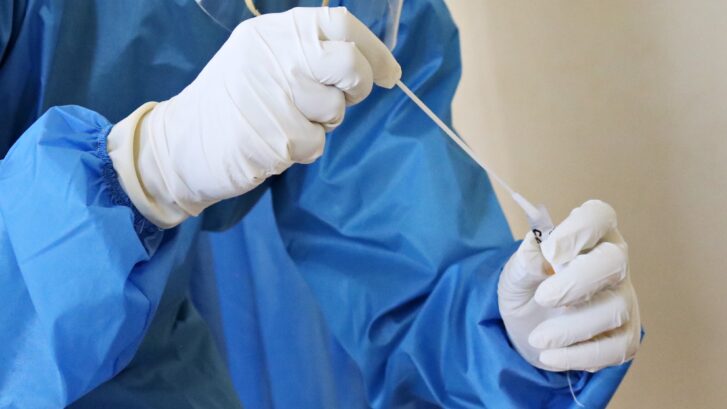What We’re Learning About the Omicron Variant
Thanks largely to the omicron variant, Florida continues to break records for those testing positive with COVID-19. We’ve learned more about this new variant since it debuted in late fall. Our primary care concierge doctors in Jupiter want to bring you up to date.
Omicron may be milder
Previous variants of the SARs-CoV-2 virus—especially the delta variant—killed at least 800,000 Americans in less than two years. The omicron variant is more transmissible than any we’ve seen to date. Hospitalizations and deaths, however, have so far not risen as quickly as case rates.
Deaths and hospitalizations often lag behind case numbers. They could rise in the future as more people—and more vulnerable people—become infected. Also, because so many people are becoming infected, both numbers are likely to increase. More infections mean more hospitalizations and deaths.
At the same time, still-early data appear to show healthy, vaccinated and boosted individuals seem to experience milder cases of COVID-19 than with previous versions of the disease. Researchers say they are 40 percent less likely to require hospitalization than those with the delta variant. One study from Britain put that figure even higher: 60 percent.
“What is absolutely clear is there is a lower rate of hospitalization with our omicron patients in our hospital system,” James Musser, chair of pathology and genomic medicine at Houston Methodist Hospital, told The Washington Post.
“That does not necessarily mean that this variant is quote-unquote ‘less virulent,’ ” he added. “The jury’s still out on that. What we know now is that . . . if you are immunized and, more important, if you are boosted, you’re going to stay out of substantial trouble.”
Omicron symptoms
The omicron variant seems to settle more in the upper respiratory tract, unlike the previous versions that targeted the lungs. Omicron symptoms tend to share more symptoms with a cold or the flu: sore throat, runny nose, and muscle aches. Symptoms of earlier infections were most commonly a fever, dry cough, and severe fatigue.
A study from the University of Hong Kong released last month notes one reason for the different symptoms with omicron. Researchers found omicron multiplied about 70 times faster in the bronchii than the original coronavirus and the delta variant. This may account for its rapid transmissibility. It also grew 10 times slower in lung tissue than the earlier versions. This could indicate lower disease severity.
But that doesn’t mean to take it less seriously than delta, Michael Chan Chi-Wai told The Guardian in Britain.
“It is also noted that by infecting many more people, a very infectious virus may cause more severe disease and death even though the virus itself may be less pathogenic,” he said. “Therefore, taken together with our recent studies showing that the omicron variant can partially escape immunity from vaccines and past infection, the overall threat from the omicron variant is likely to be very significant.”
Kids may be at risk
Cases among children, along with hospitalizations, appear to be be soaring, however. The Miami Herald recently reported on a study from South Africa, where omicron was first detected. Research showed children there had a 20 percent higher risk of hospitalization with omicron over delta. This was mainly caused by bronchitis, pneumonia, severe gastrointestinal symptoms, and dehydration.
Rudo Mathivha, head of the intensive care unit at Chris Hani Baragwanath Hospital in South Africa, told the South African Broadcasting Corporation she was concerned about trends she’s seeing among kids and young adults.
“It the past, children [under 12 years old] used to get a COVID infection . . . and it wouldn’t really put them down, it wouldn’t really send them to the hospital in big numbers to be admitted,” she said.
“We are now seeing them coming in with moderate to severe symptoms needing supplemental oxygen, needing supportive therapy, needing to stay in the hospital for quite a number of days.”
Nevertheless, kids are still 51 percent less likely than adults to be infected with omicron. They are also less likely to suffer severe symptoms.
Still learning
We want to stress that this information is very preliminary. We just detected the variant weeks ago, so we still don’t know a great deal about it yet.
But—unlike two years ago—we do know in general what the coronavirus is and how it’s likely to behave.
For instance, unvaccinated people are 17 times more likely to be hospitalized with COVID-19, according to the CDC’s Dr. Rochelle Walensky.
“What I can tell you is that compared to people who are boosted, if you are unvaccinated, you are 10 times more likely to be a case and 20 times more likely to be a fatality,” she said last month at a White House COVID-19 briefing.
One thing we do know is that the omicron variant is extremely easy to catch. It’s spreading far more rapidly than any previous version of the coronavirus.
So we advise extra caution to avoid becoming infected. Get vaccinated, get your eligible children vaccinated, avoid large gatherings, and wear a mask when unsure of others’ vaccination status. And if you have any questions or concerns, let us know.

